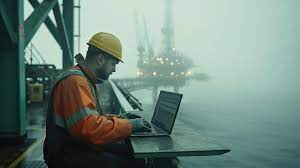Pipe inspection is a crucial aspect of industrial maintenance in various sectors such as gas, oil, water, and even urban infrastructure. It involves monitoring the condition of pipelines to prevent leaks, corrosion, or other damage that could lead to costly failures or even environmental disasters. With technological advances, traditional inspection methods are gradually giving way to more efficient and automated solutions.
Shop:https://rosegoldfiles.etsy.com/
Why is regular pipe inspection essential?
Pipelines are subject to high pressures and environmental conditions that accelerate their degradation. Natural wear and tear, internal or external corrosion, lime deposits, and environmental impacts can compromise their integrity. Regular inspections not only detect early signs of deterioration but also prevent severe incidents like gas leaks or pipeline ruptures.
Moreover, safety regulations require periodic inspections to ensure that pipelines comply with environmental and industrial standards. Modern inspection methods allow companies to meet these obligations while optimizing their costs.
Traditional inspection methods
Until recently, pipe inspection (https://www.multinnov.com/products/roview2 ) mainly relied on manual techniques. These methods required shutting down operations so that technicians could visually check the inside of pipes using push cameras or endoscopes. While these techniques are still used, they have several limitations: they are time-consuming, expensive, and often require a specialized team on-site.
Additionally, hard-to-reach or long sections of pipelines demand extra effort, which increases delays and operational costs. This is where technology brings much more effective solutions.
Robotics and drones: A revolution in pipe inspection
With the advent of robots and drones, pipe inspection is undergoing a true revolution. Solutions such as Roview2 from Multinnov offer an automated alternative to manual inspection. These robots are designed to navigate inside pipelines, even in hostile or hard-to-reach environments.
The advantages of these technologies are numerous:
- Access to unexplorable areas: Inspection robots can travel long distances inside pipelines, including through narrow or complex spaces. They can reach places that humans or push cameras could not access.
- Increased precision: Equipped with advanced sensors and high-resolution cameras, these robots capture detailed images and data, allowing for a fine analysis of cracks, corrosion areas, or blockages.
- Optimized time and costs: Unlike traditional methods that require halting operations, robots can often perform inspections without interrupting the flow of activities. This significantly reduces the costs associated with production downtime.
- Enhanced safety: Confined, dangerous, or contaminated environments are no longer a threat to workers. Robots minimize human risks while ensuring comprehensive inspection.
Artificial intelligence for predictive maintenance
Alongside automation, artificial intelligence (AI) is playing an increasingly important role in pipe inspection. With machine learning algorithms, inspection systems can not only detect anomalies but also analyze data to predict future failures. This type of predictive maintenance allows companies to schedule interventions before an incident occurs, reducing downtime and repair costs.
AI also enables real-time monitoring, allowing for remote diagnostics and immediate adjustments if needed. Combined with the Internet of Things (IoT), these solutions enable robots to be connected to a centralized network, where the collected data is continuously analyzed to anticipate problems and improve intervention efficiency.
The future of pipeline inspection
The ongoing development of robotics, AI, and advanced sensors will further transform the field of pipe inspection. More and more companies are adopting these technologies to minimize risks, extend the life of their infrastructure, and optimize their resources. Systems like Roview2 from Multinnov offer innovative solutions, with robots capable of adapting to various types of pipelines and ensuring precise and thorough inspections.
In conclusion, the future of pipeline inspection lies in automation, robotics, and artificial intelligence. These technologies provide significant benefits in terms of safety, speed, and cost, while enabling more in-depth and accurate inspections than ever before.



